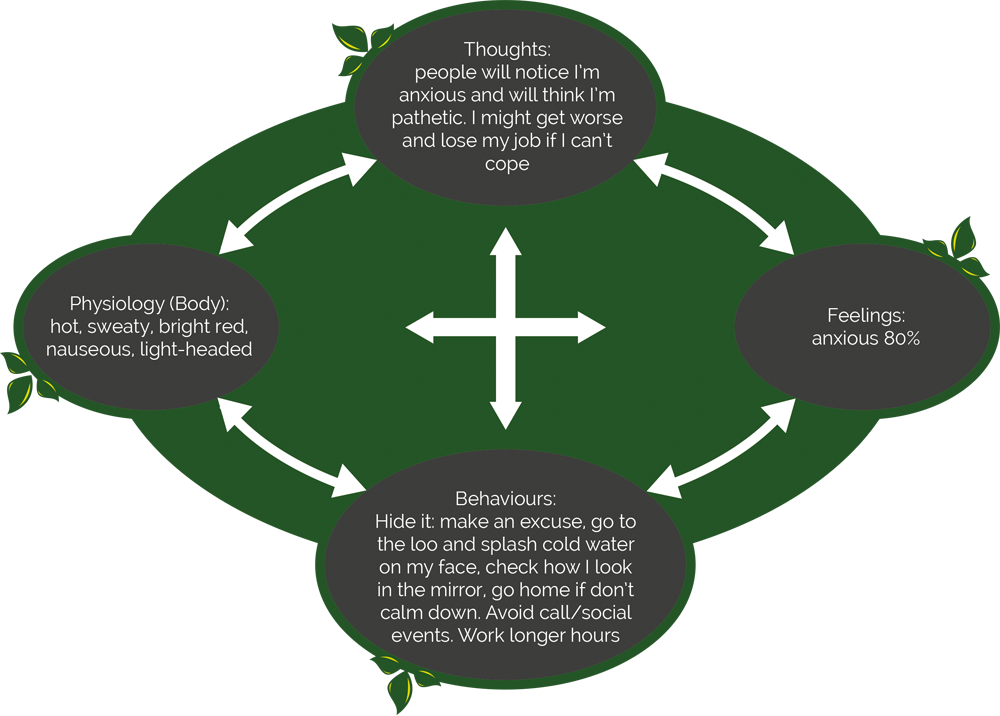Home / People We’ve Helped / Angela – Anxiety

Angela is a 36 year old lady with a 12-18 month history of anxiety symptoms, which she first noticed during a stressful period of time at work. She described more intense feelings of anxiety initially, although they only lasted for short periods of time. At these times she noticed physical changes such as increased heart rate, sweating, feeling a bit sick, a little light headed with jelly legs. She would quickly go to the toilet and try and calm herself down, splash her face with water and wait until she looked calm enough to return to her desk. She worried others would notice and think she was pathetic. She also worried that if the feelings got worse, she might pass out and make an idiot of herself. These thoughts felt pretty true and led her to try and hide what was happening from people at work and her friends.
Lately the feelings have lessened in intensity but she now worries all the more about them coming back or getting much worse. Unfortunately the stress at work has heightened, with some redundancies occurring and changes within the department she works in. She is spending longer at work than she is paid to do, more often than she would have before. Sometimes she brings work home and her social life is suffering. She has turned down a number of offers to go out, feeling she has little to say or people will think she’s boring because all she talks about is work. She has started to avoid calls and text messages just in case someone asks her if she’s ok. She has started to worry about other things too – finances, her relationship with her partner, her mood, the effects of stress on her health and so she sought therapy to try and make some sense of what’s happening.
Environment: at work, in the canteen

The initial few sessions aimed to do just that. An assessment with the therapist identified the main problem areas and Angela was helped to identify some initial goals that were important to her, such as:
The subsequent sessions focused on achieving her goals, step by step, with the therapist introducing key strategies that have been shown to help people with anxiety. Examples include:
As Angela felt less anxious and more confident, the session frequency reduced – CBT is a gradual transference of skills and knowledge so she could apply these within her own life. Once a person is back on track, the therapy can end with a session or two to consolidate and pull together the key learning points for ongoing use. The therapist will help Angela to plan her own review sessions so she can continue to work on her difficulties in a systematic way.

With over 30 years of experience in mental health, I have worked in both NHS and independent practice, focusing on anxiety, depression and trauma related issues. I specialise in cognitive behavioural therapy (CBT) and have established a private practice based in Derbyshire to provide more accessible psychological therapy. Additionally, I offer clinical supervision and mentorship in CBT, holding accreditation as a Supervisor with the BABCP.
Copyright 2025 © All Right Reserved. Designed by Frosty Developments